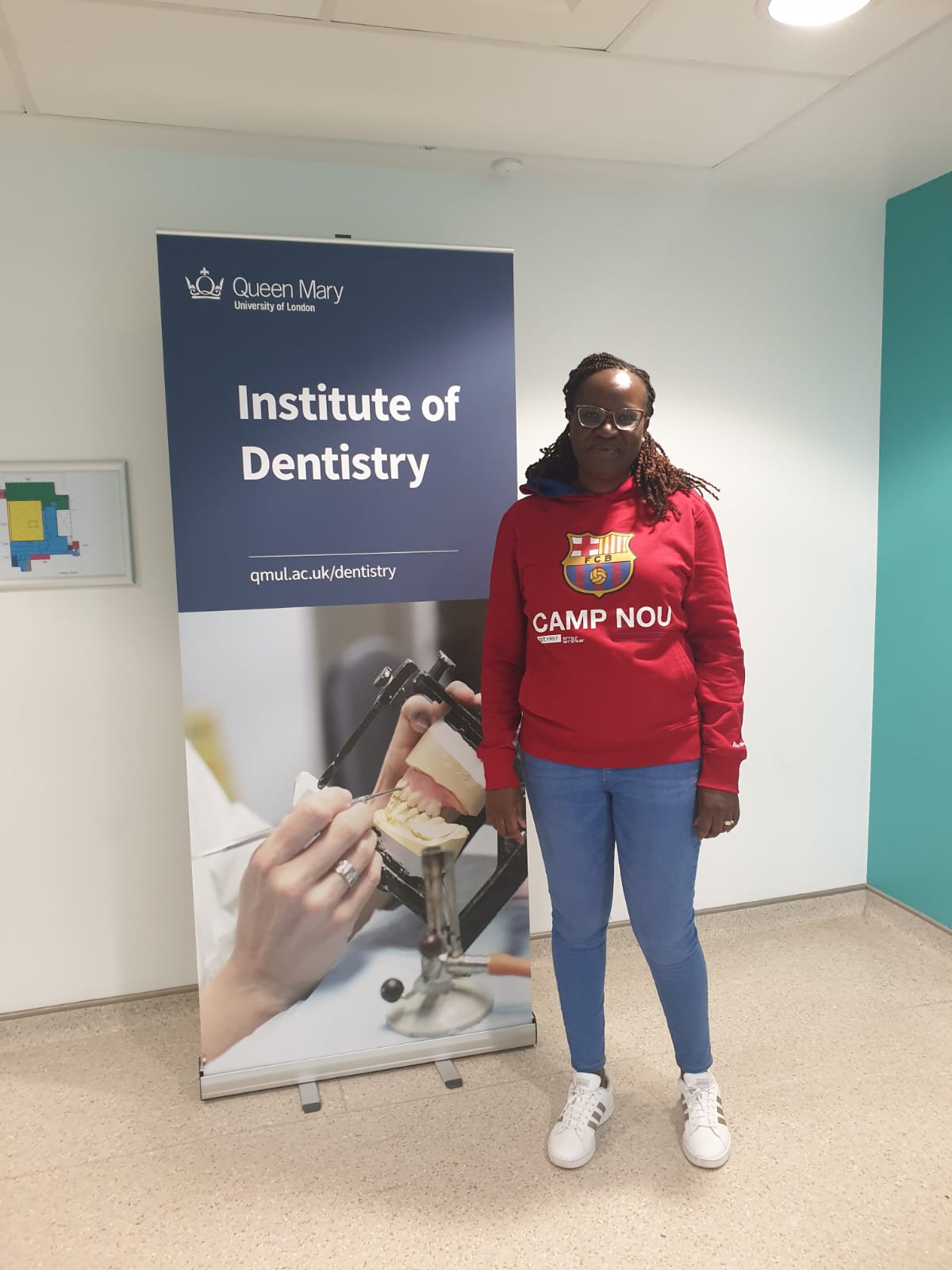Dr Olivia Osiro is a recipient of a USD 50,000 CARTA re-entry grant to complete pending work from her PhD project which was titled ‘Development of a prototype for a restorative dental cement in Kenya’. The present work is titled ‘Development of low-cost glass ionomer cements for dental restorations’. She has recently attended a short research visit between August and November 2022 as an Honorary Lecturer at the Dental Physical Sciences Unit and Barts and the London School of Dentistry, Queen Mary, University of London.

Internal collaborator: Prof David Kariuki, Department of Chemistry, University of Nairobi, Kenya
External collaborators: Prof Robert Hill, Dr Saroash Shahid, Dr Natalia Karpukhina – Dental Physical Sciences Unit, Queen Mary University of London, London, UK
Current progress: Using highly reactive aluminosilicate glasses mixed with soda-lime-silicate glass (bottle glass) to produce low-cost ionomer glasses. By reducing the ratio of the aluminosilicate glasses, and replacing it with bottle glass, the cost of production can be reduced by upto 60 – 80%. The rationale behind this is that only up to 20% of the ionomer glass is actually involved in the setting reaction on mixing with poly(acrylic acid) while the bottle glass is thought to act as a cheap filler. Bottle glass is readily available in all aspects of day-to-day life. Ionomer glasses with relevant specifications can be produced in bulk on order.
Our present research has so far produced working formulations of mixtures of two types of highly reactive ionomer glasses and bottle glass with reasonable working and setting times for dental applications. The glasses were produced through the melt-and-quench route and confirmed to be amorphous through XRD. On their own, the two glasses set in less than 30 seconds but on tempering down with bottle glass, the time is reasonably lengthened to approximately 2.5 to 4 minutes.
Planned ISO tests for dental cements include: mechanical properties, ion release properties, radiopacity tests, radiolucency assessment, setting characteristics through FTIR and NMR, and influence of particle size and tartaric acid concentration on setting reaction.
To view some photos click HERE
